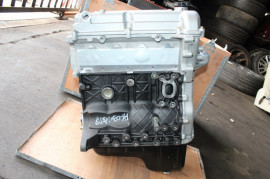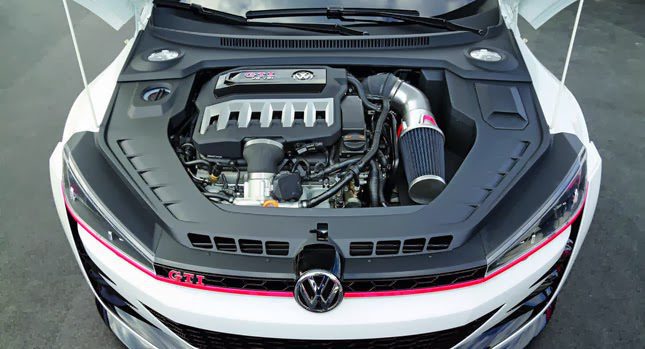Opel Corsa Engine: Common Issues and Just How to Deal with Them
Opel Corsa Engine: Common Issues and Just How to Deal with Them
Blog Article
Comprehensive Evaluation of a Subcompact Automobile's Powertrain Capabilities
In the realm of automotive engineering, the powertrain of a subcompact car stands as a vital nexus where technology, efficiency, and performance assemble. From the engine's unrelenting pursuit of ideal efficiency to the transmission's seamless choreography of power circulation, every aspect plays a critical function in specifying the total driving experience.
Engine Efficiency Analysis
In evaluating the engine performance of the subcompact car, a thorough evaluation discloses its efficiency and power result under numerous driving problems. The subcompact cars and truck's engine, an important part of its powertrain system, demonstrates extensive efficiency metrics.
In addition, when based on strenuous screening situations such as high-speed acceleration or uphill climbs up, the engine shows strength and responsiveness. Its power output remains constant, offering ample acceleration when required. The subcompact auto's engine is customized to meet the demands of urban driving, where fast velocity and nimble maneuverability are essential.
Furthermore, the engine's layout integrates modern-day technologies that boost its performance features. Features like turbocharging or variable shutoff timing add to boosted power shipment and torque, enhancing the general driving experience. To conclude, the engine performance of the subcompact auto highlights its capacity to deliver effective and reliable power result throughout different driving problems.
Transmission Performance Analysis
Examining the subcompact vehicle's transmission effectiveness includes assessing its efficiency in transferring power flawlessly throughout different driving problems. The efficiency of a transmission system is crucial as it straight impacts the total efficiency and fuel economic situation of the car. In reviewing transmission effectiveness, variables such as gear proportions, shift timing, and the smoothness of equipment changes are considered. A properly designed transmission system ought to properly deliver power from the engine to the wheels while lessening power losses.
One usual approach used to examine transmission performance is through dynamometer screening, where the power result from the engine is measured at the input and outcome shafts of the transmission. Discrepancies between input and output power can suggest the degree of efficiency of the transmission system. Additionally, real-world driving examinations are conducted to analyze exactly how the transmission carries out in practical situations. By analyzing these facets, designers can identify locations for enhancement and enhance the transmission system for better general efficiency and effectiveness.
Fuel Effectiveness Examination
The evaluation of the subcompact automobile's fuel effectiveness entails an extensive analysis of its consumption rates under various driving conditions. Fuel effectiveness is a critical consider assessing the overall efficiency and cost-effectiveness of a vehicle. By determining the quantity of gas consumed each range traveled, commonly expressed as miles per gallon (MPG) or litres per 100 kilometers (L/100 kilometres), the effectiveness of the subcompact auto's powertrain can be figured out.

In addition, improvements in technology, such as hybrid systems, regenerative braking, and automatic start-stop systems, have considerably improved gas performance in contemporary subcompact automobiles. Makers remain to introduce and enhance powertrain components to boost gas effectiveness while meeting performance needs and environmental regulations. Reviewing a subcompact cars and truck's gas efficiency offers beneficial understandings for customers seeking economical and lasting transport services.
Velocity and Handling Evaluation
An integral facet of reviewing the performance capacities of i was reading this a subcompact automobile depends on examining its velocity and dealing with features. Acceleration is important as it identifies just how swiftly the car can get to preferred speeds, influencing general driving experience and ability to move in numerous traffic conditions. opel corsa engine. Subcompact vehicles are commonly preferred for their nimbleness and dexterity, making acceleration from standstill and during overtaking maneuvers important variables to think about
When it pertains to handling, a subcompact cars and truck's ability to navigate edges, maintain security at broadband, and supply a responsive guiding feeling are vital. Limited city streets and winding roadways need precise handling to ensure chauffeur self-confidence and safety. Aspects such as suspension tuning, weight distribution, and tire grasp play significant functions in figuring out a subcompact car's total handling prowess.

Powertrain Components Introduction
Upon delving right into the details of a subcompact automobile's performance, a thorough exam of its powertrain elements is vital to grasp the automobile's mechanical supports. The powertrain of a subcompact automobile generally is composed of the engine, transmission, driveshaft, differential, and axles. Comprehending just how these elements work with each other is important in assessing a subcompact vehicle's total performance, performance, and driving dynamics.
Verdict
In conclusion, the subcompact auto's powertrain abilities have actually been thoroughly assessed in regards to engine performance, transmission effectiveness, fuel acceleration, effectiveness, and handling. The detailed review highlights the significance of each part interacting effortlessly to supply optimal performance. Generally, the powertrain parts of the subcompact automobile have actually been located to be efficient and well-balanced, making it a reliable selection for drivers looking for a compact and fuel-efficient automobile.
In the world of automotive engineering, the powertrain of a subcompact cars and truck stands as a vital nexus where efficiency, innovation, and performance merge.In assessing the engine efficiency of the subcompact automobile, a comprehensive analysis discloses its performance and power outcome under different driving conditions.Evaluating the subcompact vehicle's transmission effectiveness includes assessing its efficiency in transferring power perfectly across various driving problems. Recognizing how these elements function with each other is vital in assessing a subcompact car's total efficiency, efficiency, and driving dynamics.In final thought, the subcompact auto's powertrain capacities have actually been completely evaluated in terms of engine performance, transmission performance, gas acceleration, efficiency, and handling.
Report this page